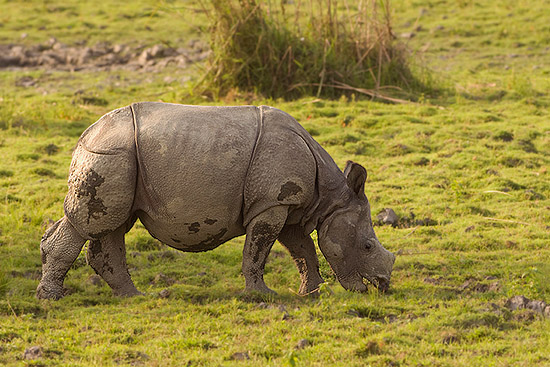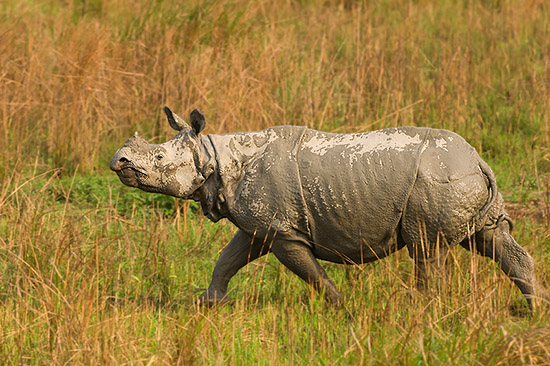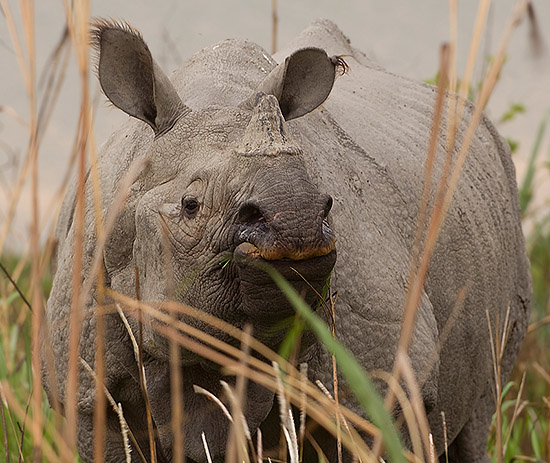As written before on my blog, in march 2008 I spent a week in Kaziranga National Park in Assam, Northeast India.
Hotspot biodiversity and UNESCO World Heritage Site
Kaziranga is probably one of the best places in Asia to observe large wild mammals. Located in the floodplains of the mighty Brahmaputra River, the park's ecology is unique in a sense that it is representative of three distinct bio-geographic regions - the Eastern Himalayas, Indo-Malayan and Indo-Gangetic regions. Its location is at the junction of two biodiversity hotspots, the Eastern Himalayas and Indo-Burma. This unique situation has led to a very high species diversity. The open landscape with high elephant grass interspersed with short-grazed grasslands, ponds, and lakes, make it relatively easy to observe the large mammals – at least much easier compared to a closed and dense forest environment.
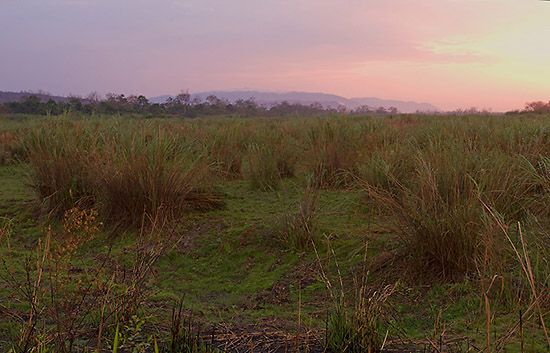
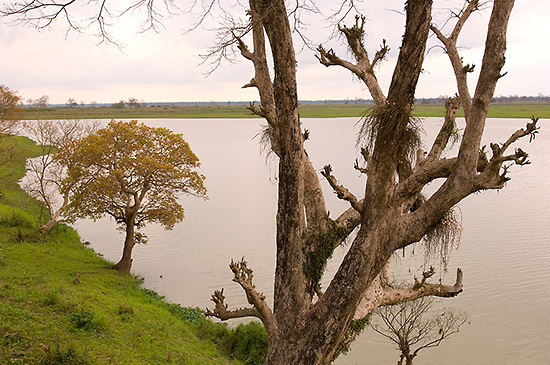
The National Park's importance in wildlife conservation is among the highest in the world because it is one of the last remaining refuges for a large number of faunal species. In addition, it is the largest tract of wet tropical grassland habitat left in the Brahmaputra basin. UNESCO declared it a World Heritage Site in 1985.
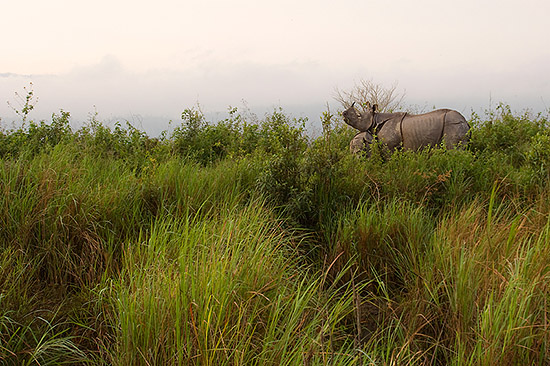
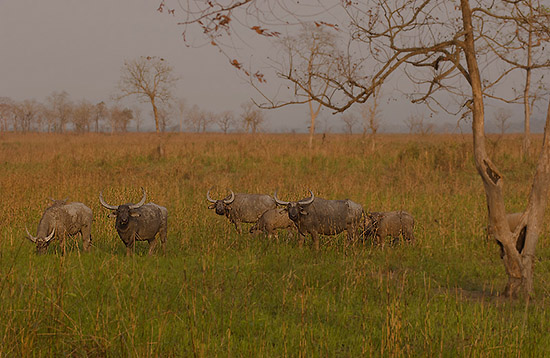
Facts and Figures
The following facts illustrate the parks amazing importance. The park holds:
- About 75% of the world population of Great One Horned Rhinoceros (about 2000 individuals)
- About 70% of the world population of Asiatic Water Buffalo (about 1500 individuals)
- Almost the entire world population of the Eastern Swamp Deer ( about 500 individuals)
- One of the highest densities of tigers of any protected area in the world (17 per 100 square kilometer)
- Highest number of endangered, threatened and near-threatened bird species of any protected area in the Indian subcontinent (46)
- Globally significant population of Asian Elephant (about 1200)
- Over 520 species of birds observed within the park and over 50 species of mammals.
Under here an image of a huge herd of Eastern Swamp Deer. The herd contained more then 100 individuals, which is about 20 % of the world population!
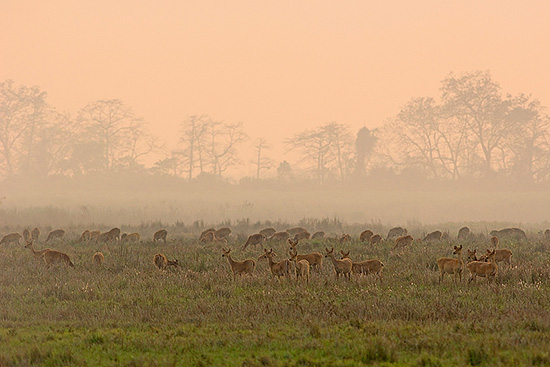
The habitats and park management
The park consists of a natural mix of deciduous forests, grasslands, marshes, swamps, lakes and pools. The grasslands are held partially open by the huge amount of large grazers, such as several deer species, Indian rhino's, elephants and water buffalo's.
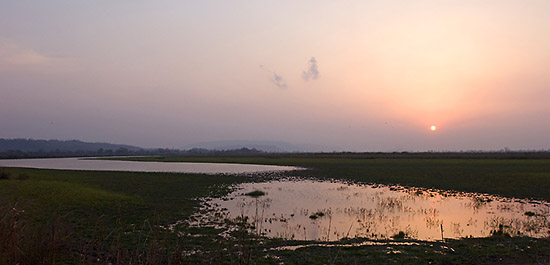
As the grasslands are essential for the survival of several of the threatened wetland species, such as the Water Buffalo, Swamp Deer and Indian Rhino, there is extra management of the grasslands to prevent them from afforestation : each year some of the elephant grass areas are burnt by the local park managers and rangers, to prevent them from a natural evolution to shrubbery and forest. With the local grazing pressure, helped by the burning of grasslands, the amount of vast open grasslands is kept more or less stable (which is 60 - 70 % of the park).
Under here an image illustrating the burning of grasslands.
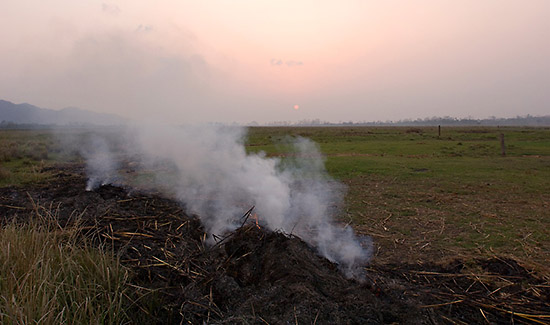
Bird diversity
Apart from the mentioned grazers the park is also a stronghold for plenty of other threatened wetland species, of which numerous bird species, such as the Greater and Lesser Adjudant, Spot-billed Pelican, Pallas' Fish Eagle, Slender-billed Vulture, Jerdon's Babbler and Black-breasted Parrotbill.
Under here some images from the threatened species and their status on the IUCN Red List: Slender-billed Vulture (Critically Endangered), Red-headed Vulture (Critically endangered), Pallas's Fish-eagle (Vulnerable), Grey-headed Fish-eagle (Near-threatened), Spot-billed Pelican (Near-threatened), Lesser Adjudant (image left - status 'Vulnerable') and Greater adjudant (right in flight - status 'Endangered').
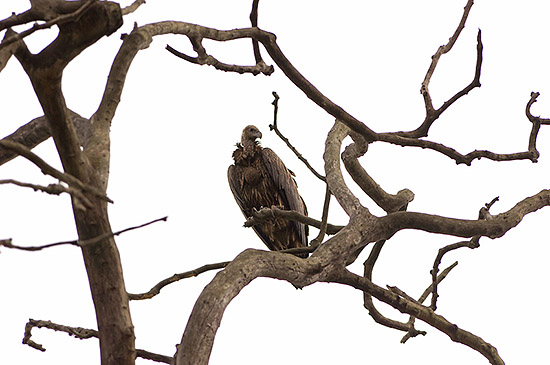
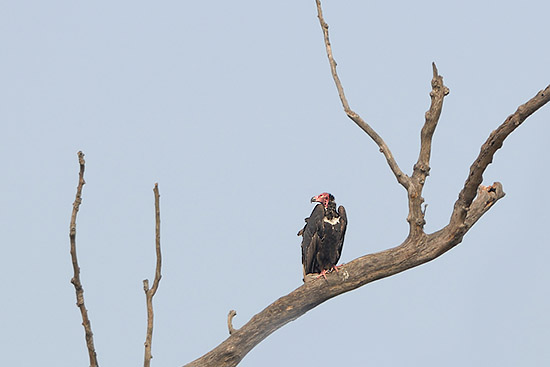
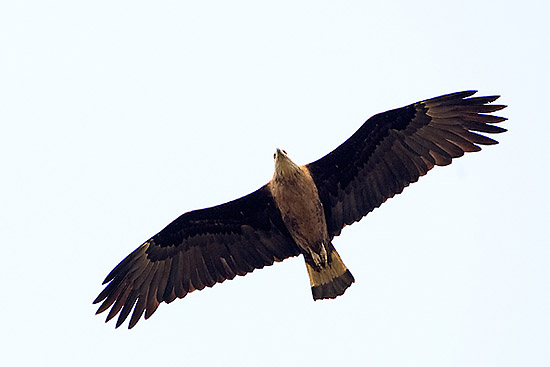
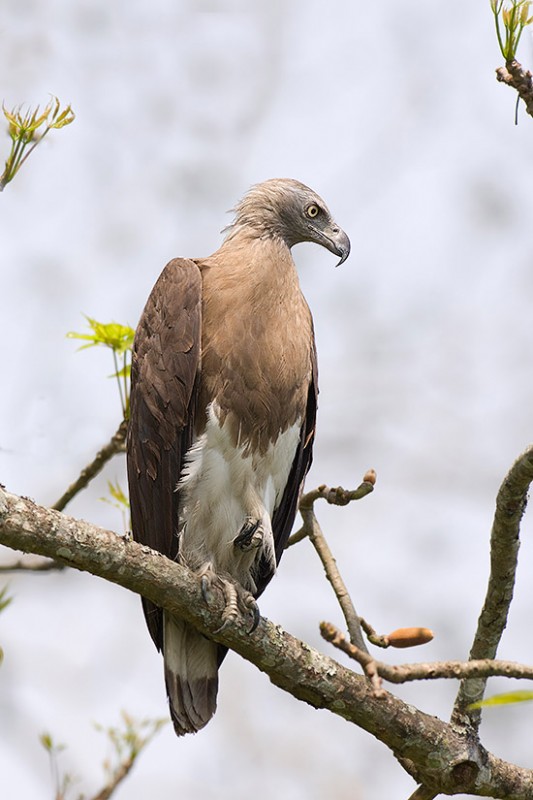
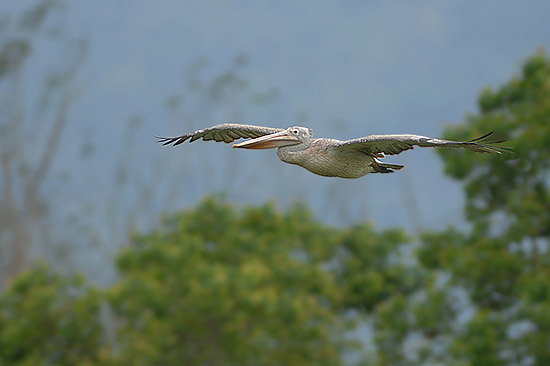
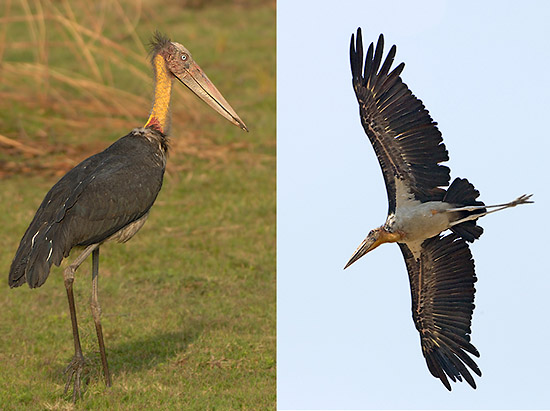
As mentioned before, the park holds a large number of bird species. Under here, Indian Black-billed Roller, a common species in the grasslands with scattered trees. A little less common, but seen every one or two days, was the Pied Harrier. Under here, a beautiful adult male.
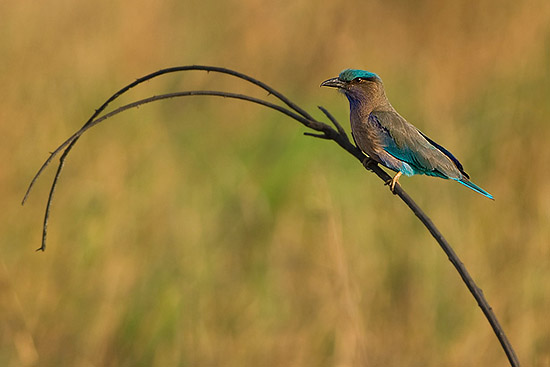

Under here, some forest and forest edge species: Kaleesj Pheasant, followed by an Asian Barred Owlet and Blue-throated Barbet.
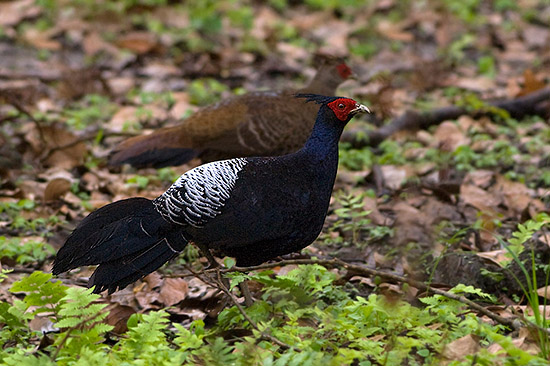
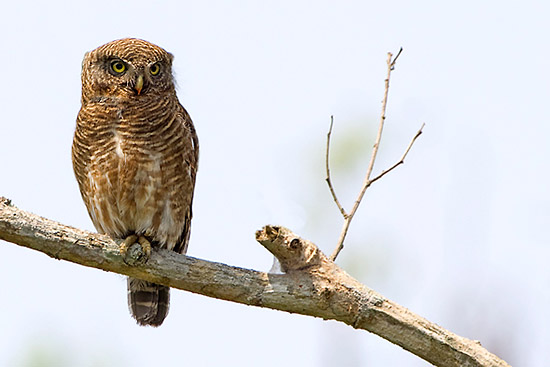
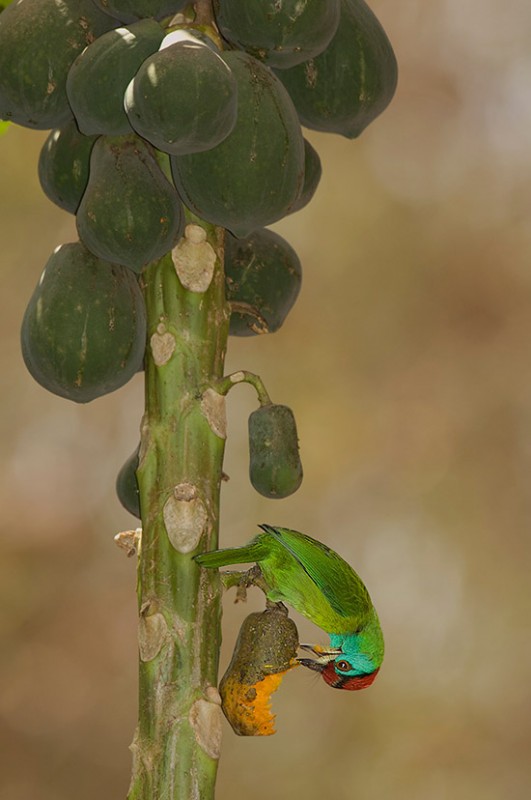
Mammal diversity
One of the most frequently encountered mammals in Kaziranga, is the Hog Deer, a small deer species. It is another endangered species, for which Kaziranga is an important stronghold. Since the 1950's, conversions of Asia's rich floodplain grasslands for agriculture, has led to a dramatic decline of this formerly widespread and abundant species. Its habitat consists of lowland wet or moist tall grasslands, often associated with rivers. The species avoids closed canopy forest.
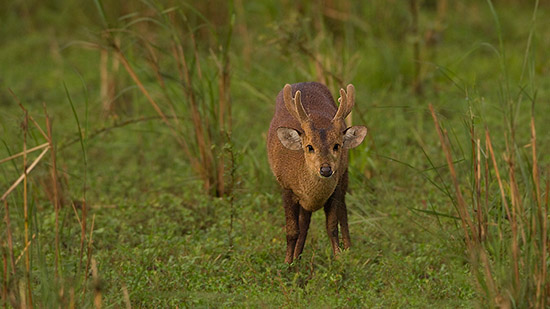
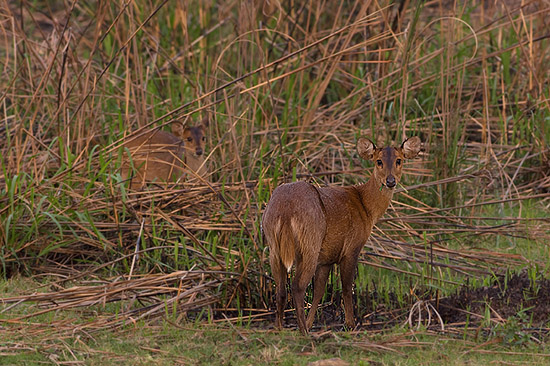
Under here, images from a Swamp Deer, Asian Elephants and Water Buffalos.
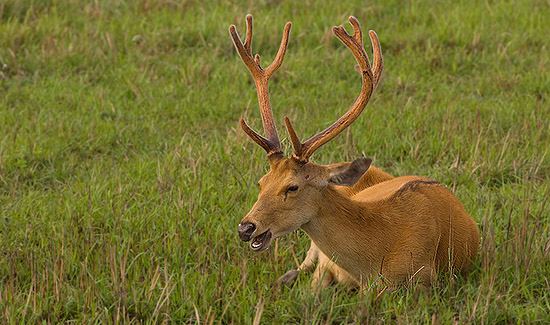
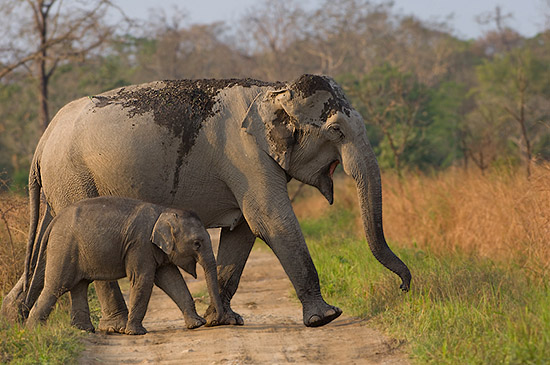
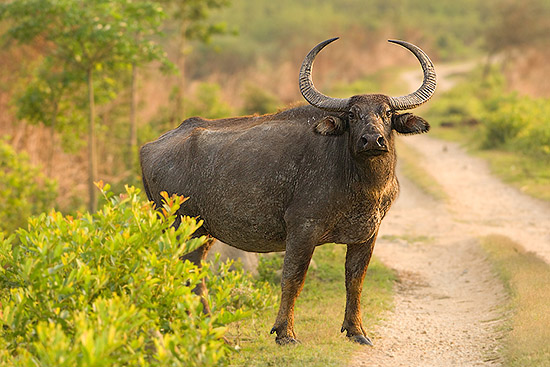
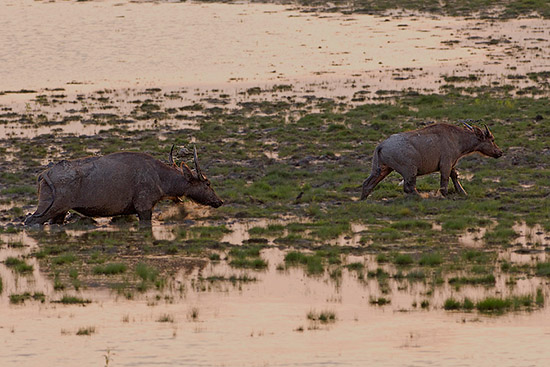
Jurassic Park
Great One-horned Rhinoceros is probably the most iconic species of the park. Its massive body with its armour-plated appearance and prehistoric looks, makes you sometimes wonder whether you've ended up somewhere in a Jurassic Park movie...
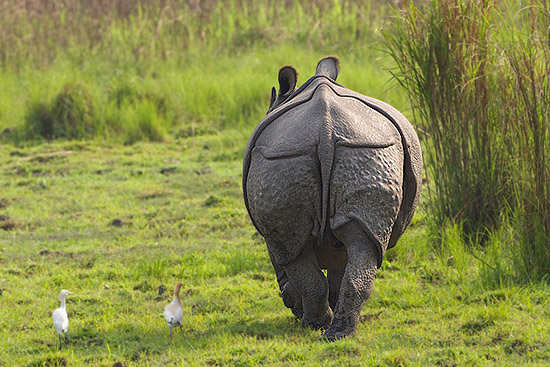
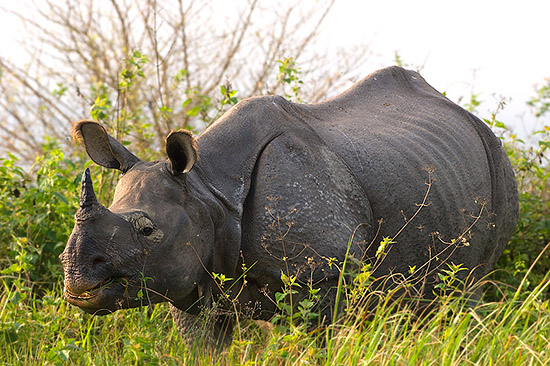
Greater One-horned Rhinoceros is one of the threatened species, which almost depend entirely for their survival on the National Park of Kaziranga. Under here, an image from a bathing Rhino, a common sight along shady forest pools during the hottest periods of the day.
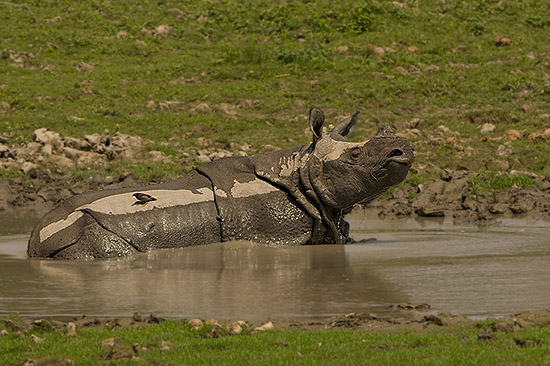
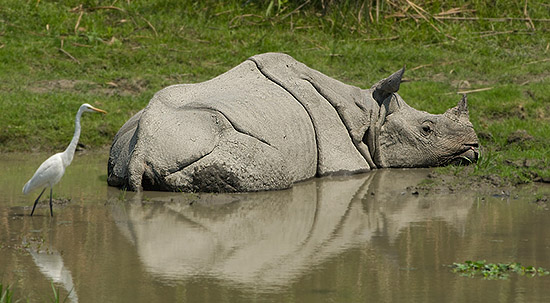
The Greater One-horned Rhinoceros, the facts
The Greater One-horned Rhinoceros is primarily a grazer, with the grass Saccharum spontaneum comprising a major part of it's diet all year round. During the winter, the Rhino's often also browse the scrub vegegation, which is found more frequently at the edge of the flat and vast alluvial lowland grasslands. They rarely venture more then 2 kilometer away from water. They spend most of their time in the flat alluvial marshes, and rarely roam upwards into the adjacent Shorea robusta hill forests. The only exception to this, is during the monsoon season, when the alluvial floodplains can become completely inundated. The species is classified as Vulnerable on the IUCN Red List. World population is now estimated at about 2700 individuals. The Greater One-horned Rhinoceros was once to be found right across the northern part of the Indian subcontinent, it's range taking in the Indus, Ganges and Brahmaputra river basins, and extending from Pakistan to the Indo-Burmese border. The species was once common in North-West India and Pakistan, where the species already started a quick decline around 1600. The species suffered between 1600 and 1900 a sharp decline all over it's range, and the species faced extinction at the start of the 20th century. Main reasons were habitat loss combined with severe hunting and poaching of the species. During the past centuries huge areas of the natural grasslands in the fertile alluvial floodplains were conversed into agricultural land and this still goes on outside the national parks. Fortunately the numbers have climbed steadily over the past two decades, due to protection programmes and specific park management measures for this species. Despite these measurements, only two populations currently contain more then 100 individuals, Kaziranga, with about 2000 rhinos and Chitwan, with about 450 indivduals. Outside these parks in recent times catastrophic large scale poaching actions took place in several places, where in a very short period some populations were brought on the brink of extinction, such as in Bardia in Nepal.
Under here an image of a young rhino grazing, follwoed by images from adult animals.
